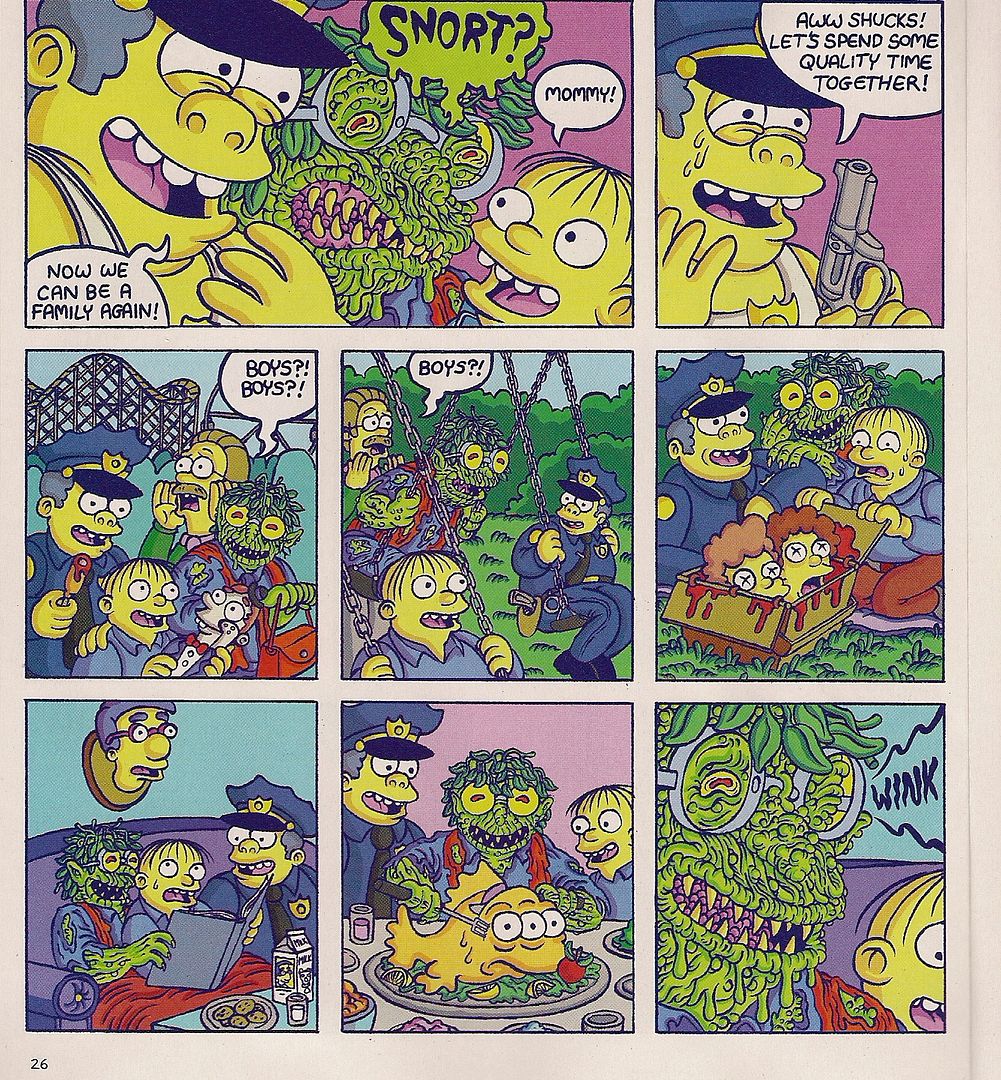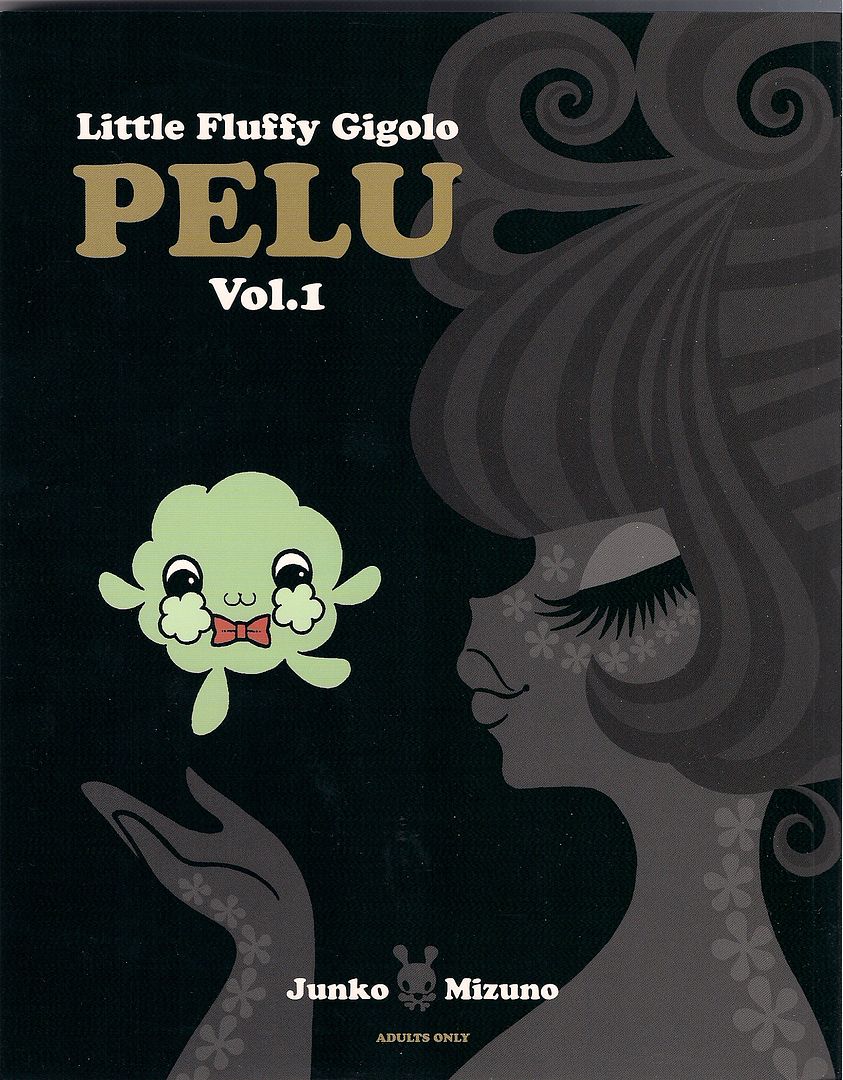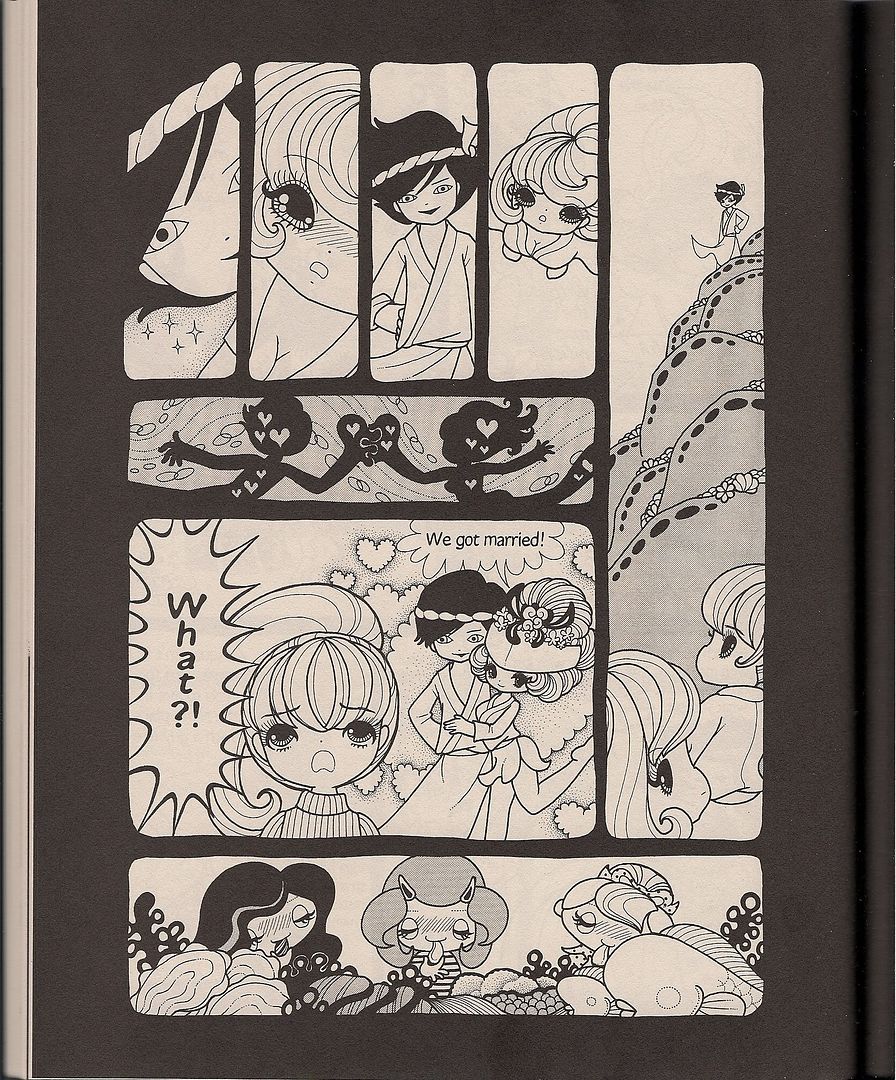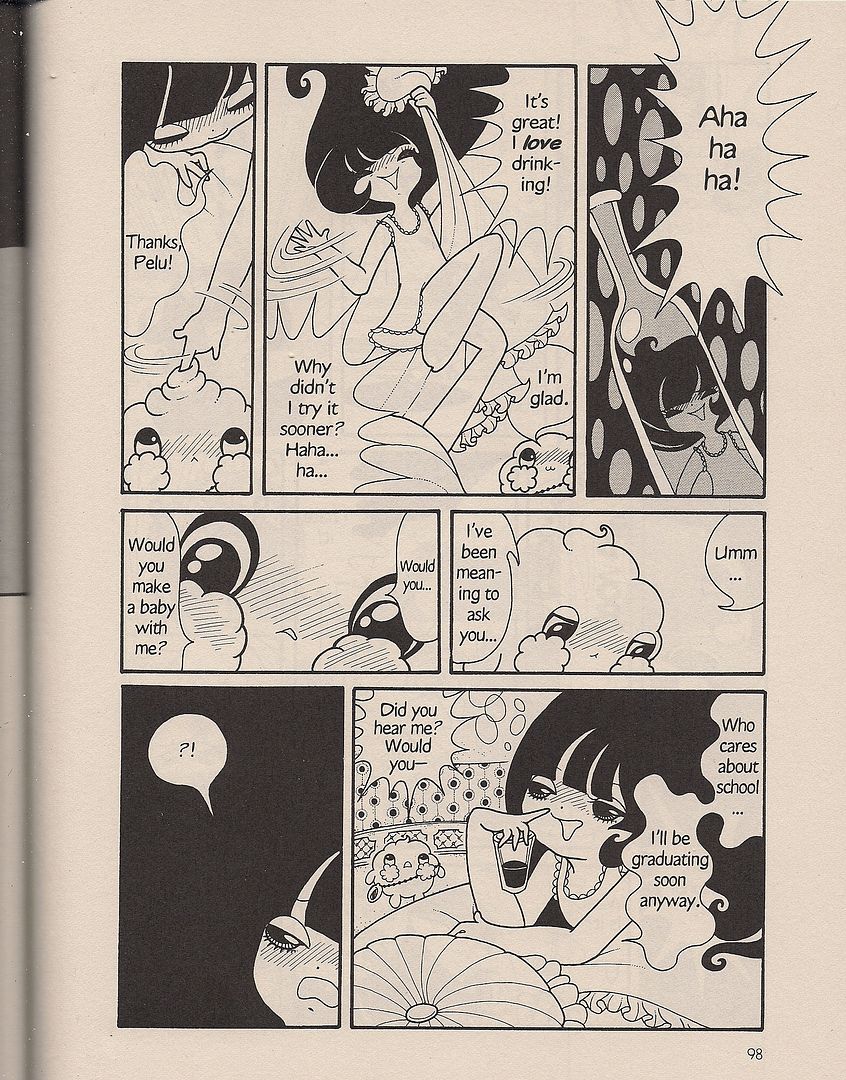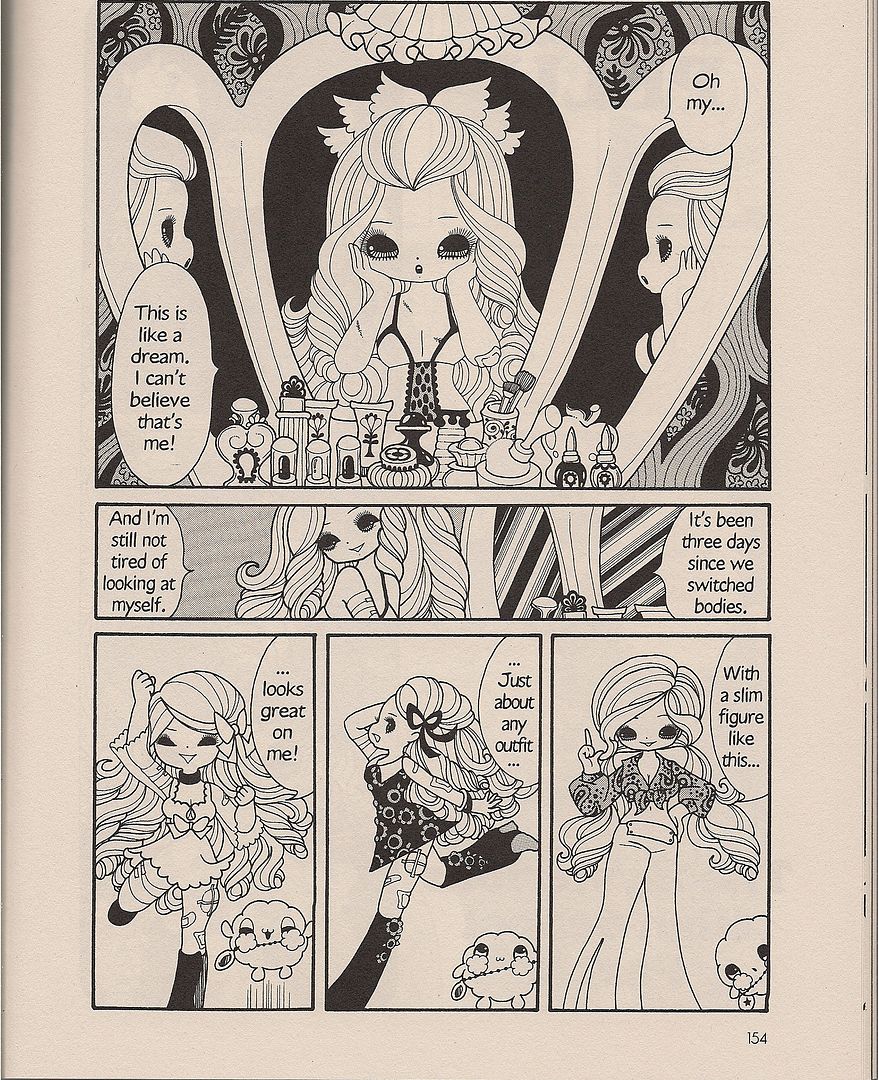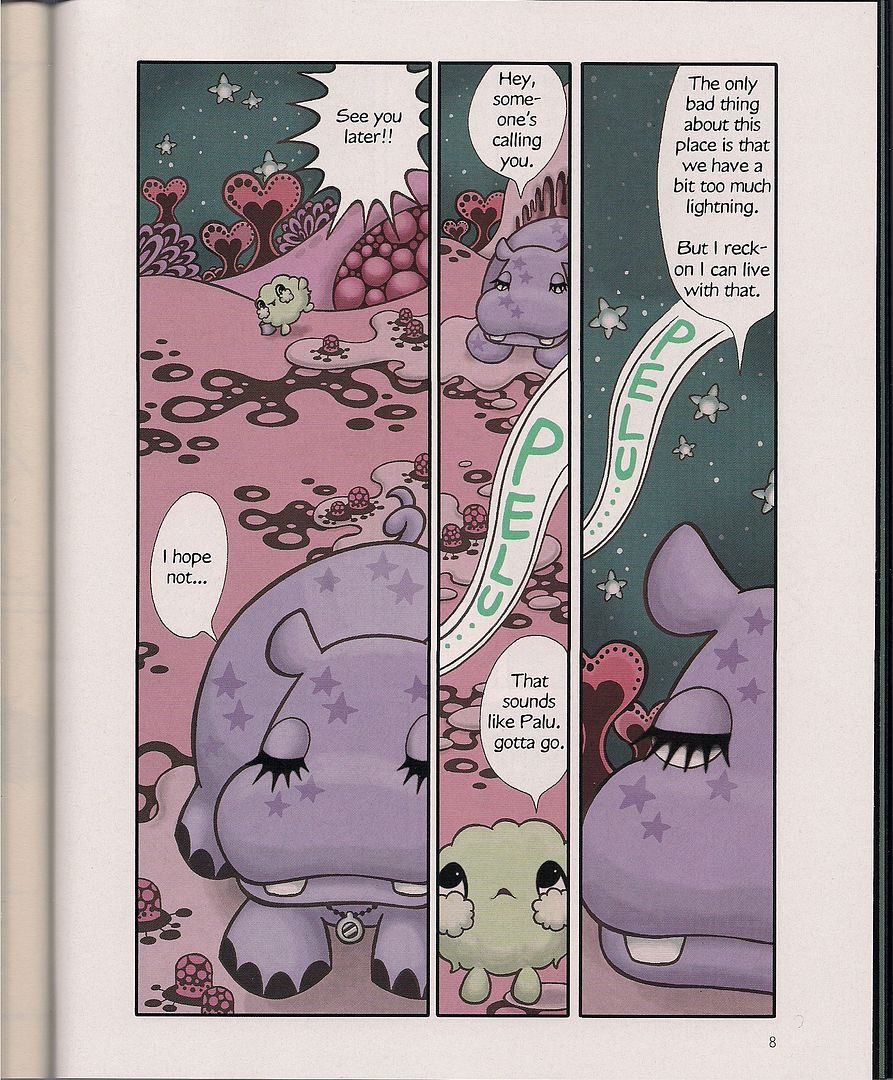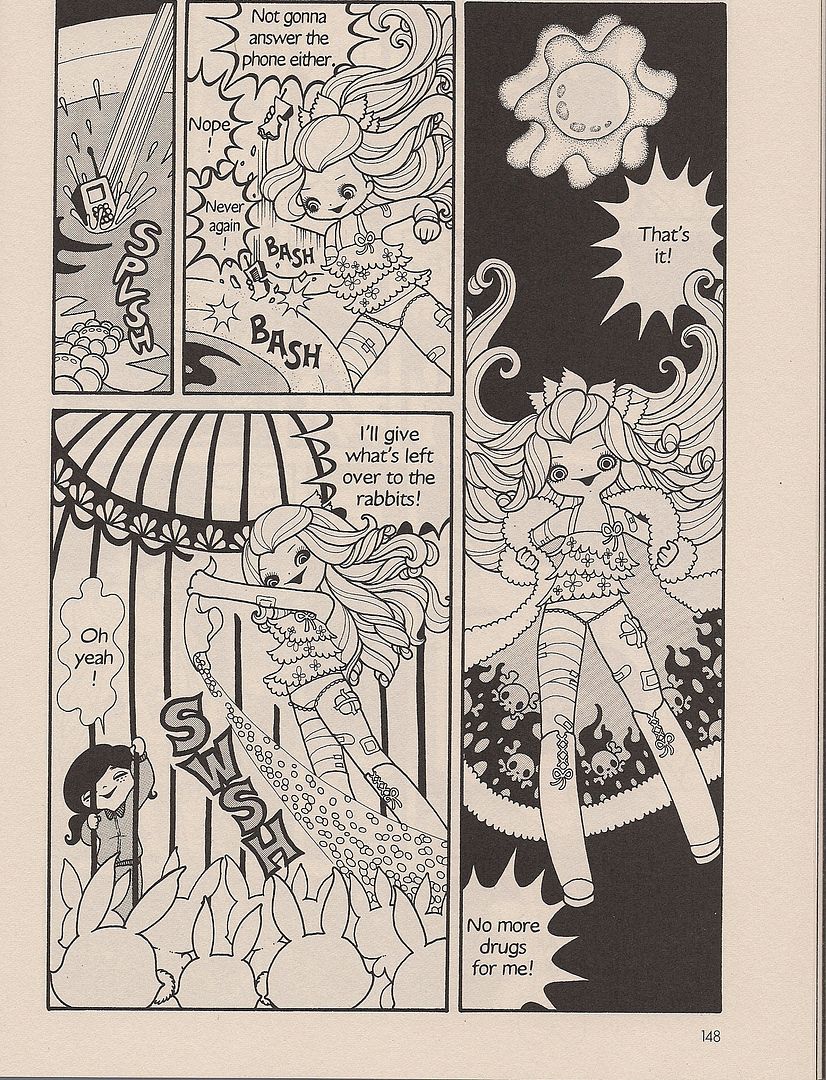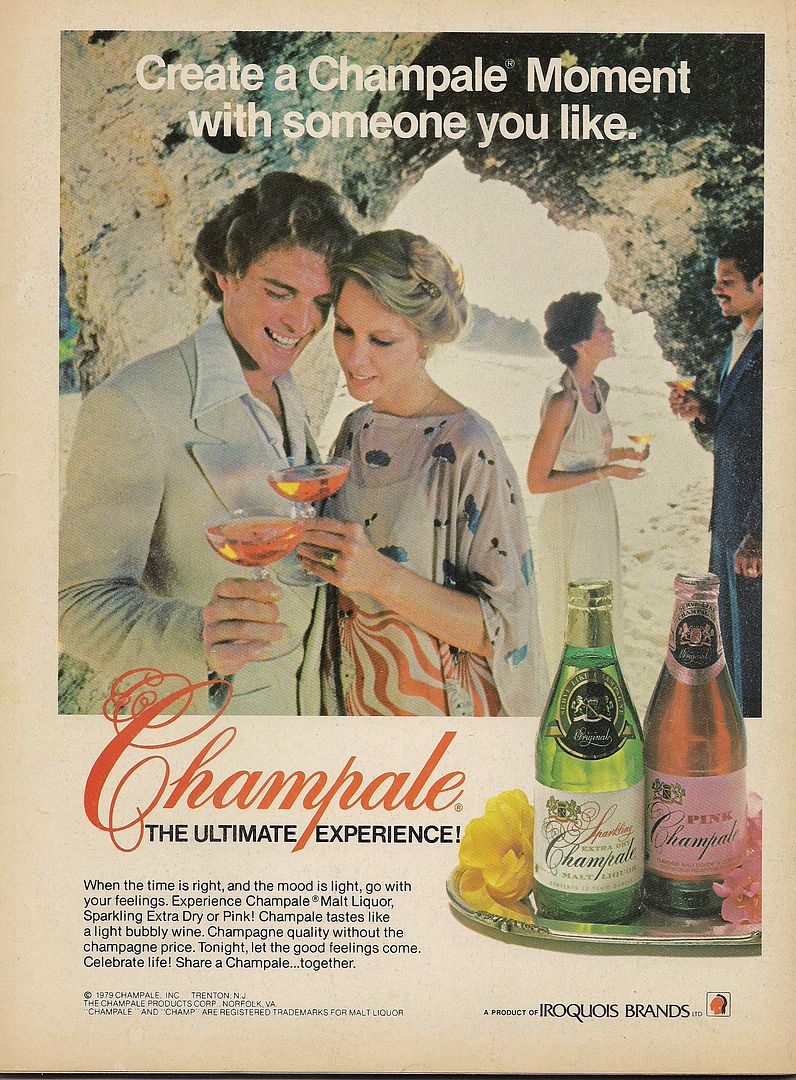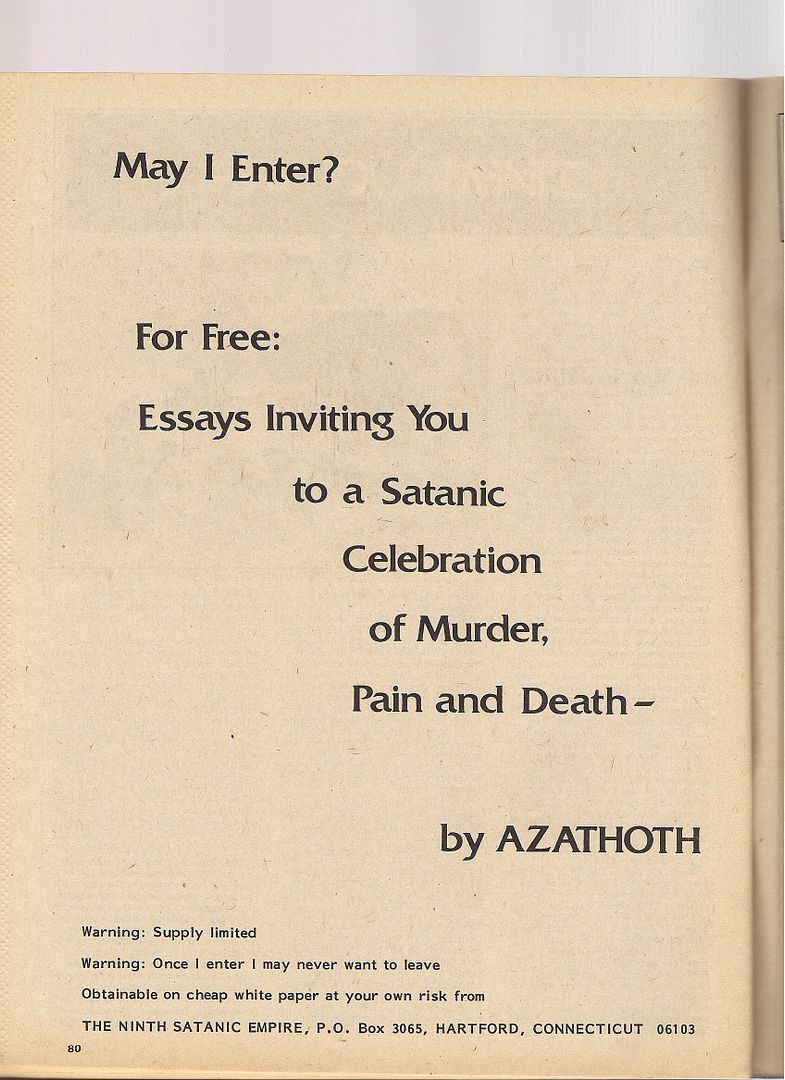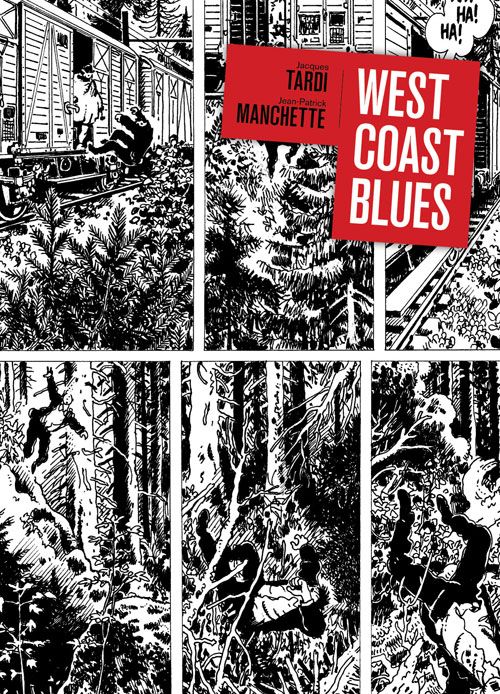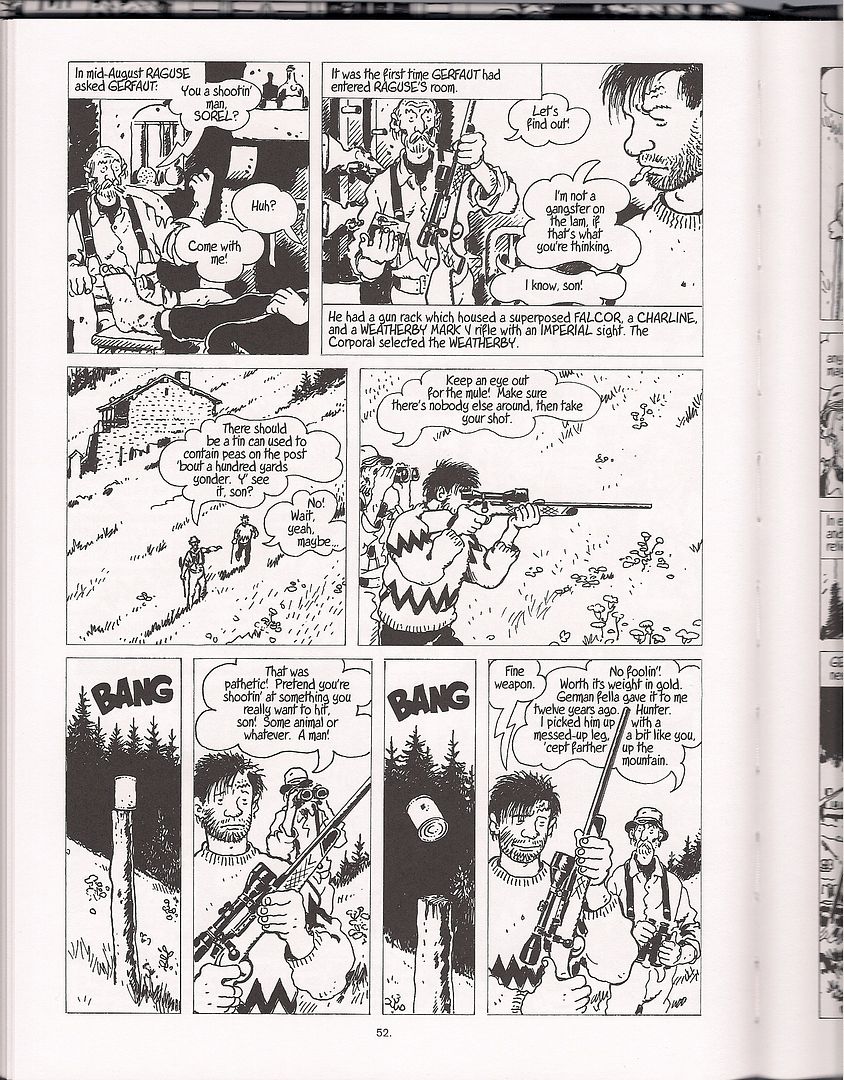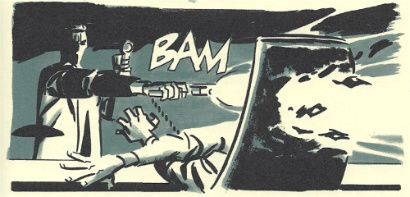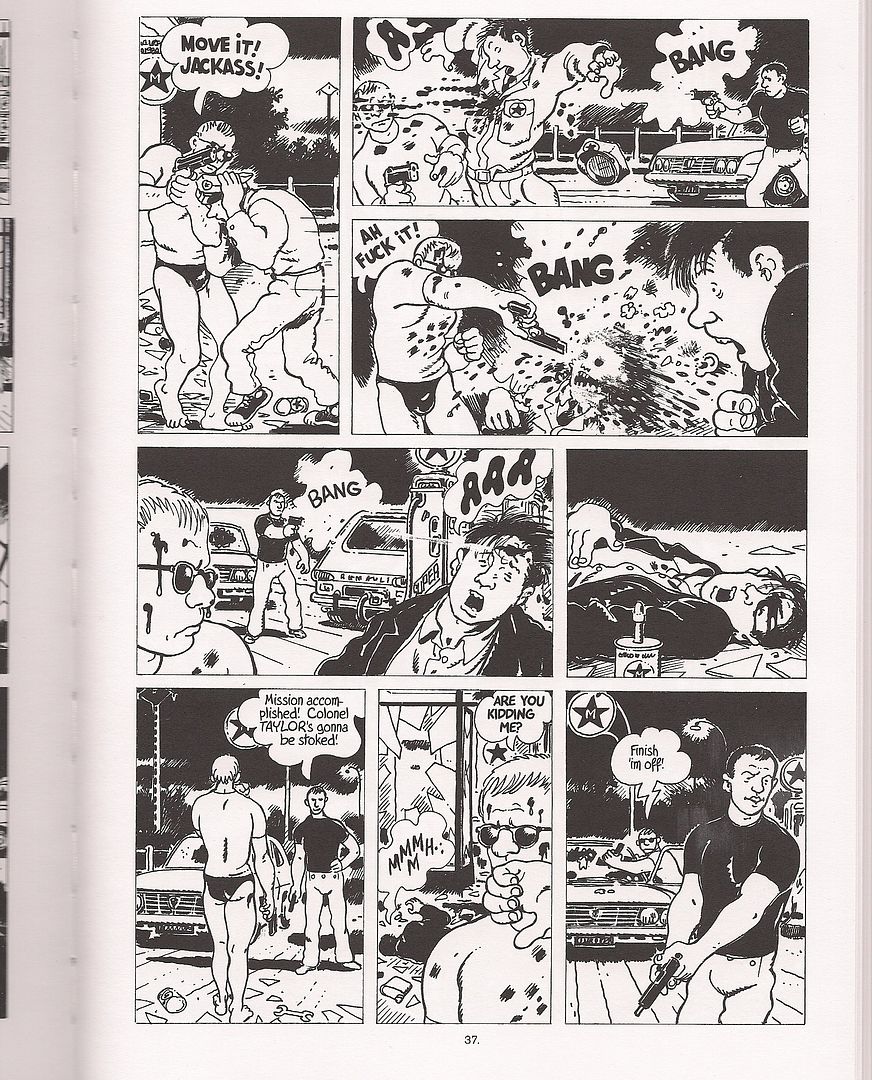Back from the brink...
LAST WEEK'S REVIEWS:
Treehouse of Horror #15 (Simpsons horror of every stripe from the Kramers Ergot crew; it works)
Plus!
Magical Mystery Tour (the comic of the movie, included with the album; the Beatles are still here, but what of their form?)
At comiXology.
*And I know I said I'd have the second half of my big Manga post up at the Savage Critics; didn't happen, sorry. Coming soon, after tomorrow's SPX report post on this site.
*Speaking of which, you just can't wait for sweet sweet SPX coverage, why not enjoy an exciting Internet 3.0 simulated con experience as follows:
1. Download Sean T. Collins' MP3 audio of the Critics Roundtable we (and Chris and Tucker and Douglas and Rob and Gary) participated in (and don't forget the separate recording of Sean's own panel on alt genre comics).
2. Visit Johanna Draper Carlson's panel report for notes and comments on what was said, plus a photographic group image you'll want to print out and hang in your locker. Tom Spurgeon raves "this looks like a black velvet painting of the Last Supper starring a troupe of circus midgets" - and just wait 'till you hear us talk!
3. Rise from your seat and flutter backward, backward up the Marriott escalator. Split yourself in half. Become news: Chris Mautner! Become observation: David Welsh!
4. Erupt your consciousness into the cosmos via Tom Spurgeon's big link page, and live forever, in the comics convention wrap-up sense.
5. You are in a car with myself, Chris and Tucker. I'm talking about the stuff I picked up from Fantagraphics' 99-cent pamphlet sale. The last issue of Muñoz's & Sampayo's Sinner I was missing (#3); various issues of Fanta's 1998-2003 attempt to translate an Eightball-style one man pamphlet anthology for Lewis Trondheim, The Nimrod (an anagram for "Trondheim"); and the 1990 Eros Comix release of Frank Frazetta's '60s smut paperback interior illustrations, Baby, you're really something!
Which raises the question: Image has been putting out one-shots and miniseries based on Frazetta's paintings for a while now, but when are they going to make a comic out of the greatest Frazetta image of all time?
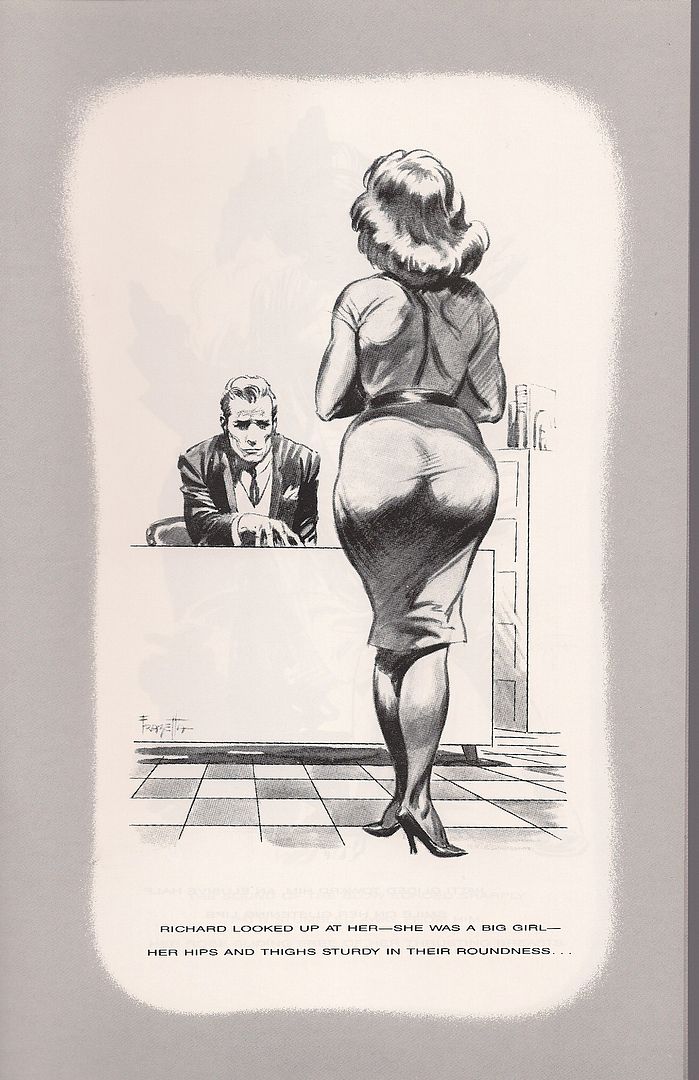
That's right, you just devised a six-issue miniseries from that guy's face alone, before the hand bumped it up to a 300-page original graphic novel. Same here. Hell, if I'd made an illustration like this I'd want it laser-etched onto my headstone. I might do that anyway.
*Oh good, you're back.
THIS WEEK IN COMICS!
Prison Pit Vol. 1: Oh yes, it's finally here - Johnny Ryan's bloody sexual fight comic, very much the 'new action' of Sean's SPX panel, a two-fisted smash-up of international comics influence and the universal joy of tight-wound one-on-one combat, so tight that everything that comes out of a body becomes a weapon, and doesn't that have a way of mixing pleasure and pain? A dangerous man is lost below the surface of a hellish jailhouse planet; violence happens. From Fantagraphics, a 120-page, $12.99 softcover; review here, preview here. I liked this a hell of a lot.
The Book of Genesis Illustrated by R. Crumb: And moving along from the profane to the sacred, here's an exciting and splendid 224-page funnybook adaptation of the first book of the Good Book by Jack T. Chick admirer and debut graphic novelist Robert Crumb. It's a $24.95 W.W. Norton hardcover, so you probably won't find it on a bench or anything though. Need I mention this is by far the longest single comics work Crumb library? Jeet Heer reviewed it here, and examined the adaptation here; preview is here. That cover art is amazing.
Trotsky: A Graphic Biography: Onward to another big publisher and a different respected cartoonist, here's Rick Geary's Hill and Wang hardcover on the life of another tortured figure, following up on his 2008 biography of J. Edgar Hoover.
The Upside-Down World of Gustave Verbeek: Only the latest deluxe collection of early newspaper comics from Sunday Press Books, always a welcome presence. And god - an 11" x 16" complete collection of The Upside-Downs of Little Lady Lovekins and Old Man Muffaroo?? That one strip from 1903 you turn upside down and kind of cross your eyes at so the dude with a hat looks like a girl in a dress? Damn, I bet the big size helps, as a matter of fact. Also included is the complete run of something called Loony Lyrics of Lulu, and samples from the rather awesome Terrors of the Tiny Tads, which is all about wee folk getting freaked the fuck out by impossible animal, vegetable, elemental and artificial shit. Info and samples here; it'll run ya $60.00.
Aya: The Secrets Come Out: Being vol. 3 in Marguerite Abouet's & Clement Oubrerie's comedic soap opera set in the Ivory Coast of the late '70s, where writer Abouet grew up. I suspect this will be as pretty and endearing as ever; vol. 5 is due in France in about a month. Drawn and Quarterly publishes, $19.95 for 128 color pages.
Ball Peen Hammer: A new First Second original, a fairly hard-edged, dialogue-driven piece set in a small space as a plague swirls outside and humans get ugly indoors for the sake of getting by. Tucker Stone liked it a bunch. Written by playwright and filmmaker Adam Rapp with art by George O'Connor, of the publisher's 2006 Journey Into Mohawk Country and various picture books. It's $17.99 for 144 color pages.
Refresh, Refresh: From the same publisher, a comic by Danica Novgorodoff (of First Second's 2008 Slow Storm) adapting a screenplay by filmmaker James Ponsoldt adapting a short story by Benjamin Percy; the subject matter is young men in a small town with fathers away in Iraq. It's $17.99, 144 pages; preview.
Tiny Tyrant Vol. 2: The Lucky Winner: But while "Trondheim" rearranges to "The Nimrod," Paul Gravett notes that "Lewis Trondheim" is an anagram for "The World is Mine." In keeping with that, here's (again) First Second with the latter half of their re-release of this kids' work, drawn by Fabrice Parme, now in 7 1/2" x 12" softcover format for $9.99.
Ghost Comics: A Benefit Anthology for RS Eden: This is a benefit anthology aimed at helping a Minneapolis substance abuse treatment facility, with some interesting artists involved: John Porcellino, Zak Sally, Warren Craghead, Kevin Cannon, David Heatley, Jeffrey Brown, Allison Cole, John Hankiewicz and more. Full list of folk here. Edited by Ed Choy Moorman; published by Bare Bones Press at $10.00.
Howard Chaykin's Power & Glory: From Dynamite Entertainment comes a new collection of Chaykin's 1994 superhero takeoff/media satire, published at the time by Malibu's short-lived Bravura imprint. It holds a special place in my heart as the first Chaykin stuff I ever looked at -- off a K-Mart comics/magazines rack, if I recall correctly -- although it's pretty scattershot in execution, apparently looking toward further developments that weren't to be. Decent high concept though, pairing a dipshit PR-friendly superhero with a deeply unimpressed man in black who gets shit done behind the scenes. A four-issue initial miniseries and a one-off holiday special were completed, along with a short story for the premium pamphlet item Bravura #0, although I'm not sure if that last bit is collected here. It's $19.99. Chaykin is also writing Boom!'s Die Hard: Year One #1 this week.
The Umbrella Academy: Dallas: But if you like your reprints a little more current, how about a $17.95 softcover for Gerard Way's & Gabriel Bá's broken superhero team, now scattering a ways around history. JFK, family matters and more; preview.
Absolute Promethea Vol. 1 (of 3): Oh wait, I know you. You like your reprints big and slipcased and $99.99, eh? All right, how about the first 12 issues (1999-2001) of Alan Moore's & J.H. Williams III's power-of-creation cataclysm goddess saga, both its writer's personal guide to the realms of magic and the lynchpin of his work-for-hire America's Best Comics superhero universe. These early chapters focus mainly on glittering genre content, some of Moore's slickest, aided greatly by Williams and longtime inker Mick Gray building mightily on the decorative style nailed down in Chase; everyone remembers the Tarot chapters, #10's issue-length sex scene/lecture and #12 multi-level narrative clockwork, but #11 between them is a pretty great take(off) on the still-fresh vogue for 'widescreen' superhero comics. A fantastical far off place indeed, to see Alan Moore react to a genre environment surrounding him! Allow these small pleasures to slink back into view.
Hellboy Library Edition Vol. 3: Conqueror Worm and Strange Places: Ok, less money? Still big? How's $49.95 for 312 pages comprising the final multi-issue Hellboy storylines written and drawn by creator Mike Mignola to date? That's Conqueror Worm (2001), The Third Wish (2002) and The Island (2005). Like this. With 30 pages of unseen sketchbook material.
The Best American Comics 2009: I realized long ago I'm not the audience for these yearly samplers of shorts & excerpts, but I'm sure editor Charles Burns -- selecting from among pieces suggested by series editors Jessica Abel & Matt Madden while suggesting a few of his own choice, if the usual procedure holds up -- will put together a decent 352 pages, given the list of artists chosen. No time's a bad time for Matt Broersma. From Houghton Mifflin, priced at $22.00.
Berserk Vol. 31: Your forever ongoing manga of the week, Kentaro Miura's saga of blood and swords and people hiding in barrels. A little bit of that last action's in the preview, oh yeah. Vol. 34 just arrived in Japan last week, so Dark Horse is catching up.
Sleeper: Season Two: Collecting what should be all the rest of Ed Brubaker's & Sean Phillips' Wildstorm superhero-spy hybrid into a 288-page softcover, priced at $24.99.
glamourpuss #9: Dave Sim.
Herogasm #5 (of 6): Nearing the end of this supplement to The Boys (speaking of dipshit PR superheroes and unimpressed men in black), the upcoming trade of which looks to be treating it as just another storyline in the general continuity, which indeed is what it is, only quicker this way. Note that Dynamite is also releasing a $12.99 softcover of Garth Ennis' Battlefields: The Tankies, the best of these latter day War Stories by a country mile, a rambling look at the thrown-together men of rumbling armor and their greater situation. Well worth checking out.
Labels: this week in comics


